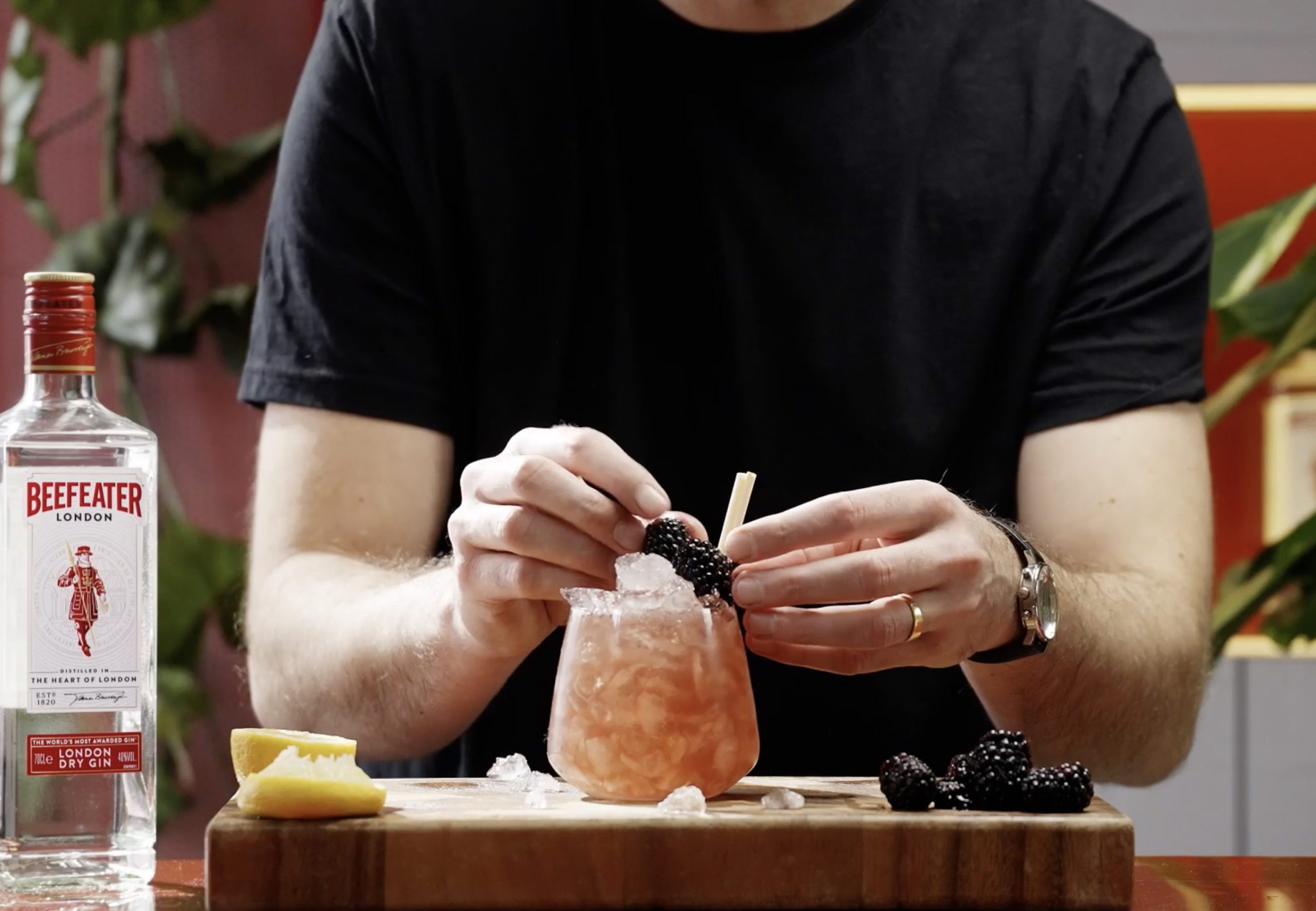juniper berries
Gin isn’t gin without juniper berries. We mean this literally: the legal definition of the spirit states that it must be flavoured with juniper berries. However, there is no stipulation on how strong their flavour must be. This means that in some gins, the juniper notes are big and bold whereas in others, the juniper simply lingers in the background to allow other botanicals to steal the show.
Juniper berries come from the juniper tree, a coniferous plant native to Europe, Asia, and North America. As a result, their flavour is piney with a touch of fruitiness and spice, and they lend a distinctively crisp and refreshing taste to gin.
coriander seeds
The second most important botanical in gin, coriander seeds are derived from the coriander plant, which is native to regions spanning from southern Europe to southwestern Asia. Their flavour can vary significantly depending on where they come from, although coriander seeds generally contribute citrusy, spicy, and slightly floral notes to gin, enhancing its complexity and adding depth to its flavour profile.
angelica root
Angelica root is an important player in the gin game as it acts as a binding agent, helping to harmonise the flavours of other botanicals. It adds earthy and herbal undertones to gin, contributing to its overall balance. Angelica root is obtained from the Angelica archangelica plant, primarily found in northern Europe and Asia.
orris root
Orris root has a perfumed, floral, and slightly woody aroma. It serves as a fixative, binding the flavours and aromas of other botanicals together while imparting a delicate floral note to gin. Orris root comes from the iris plant, particularly Iris germanica and Iris pallida, which are native to Europe and western Asia. For gin production, three to four-year-old plants are harvested and then stored for up to three years to allow the flavours to develop. Before it can be used, orris root must be ground into a powder as it is very hard.
black pepper
Black pepper is a flowering vine native to South India, however, it is now cultivated in various tropical regions around the world. Most of us know what freshly ground black pepper tastes like as it is one of the most common ingredients used to season savoury dishes. When it comes to gin, black pepper adds a subtle spiciness and warmth which complements other botanicals while providing a little kick to the finish.
cardamom
The cardamom pod is a spice that comes from plants belonging to the genera Elettaria and Amomum, native to India, Nepal, and Bhutan. The pods, which can be green or black, contain many small black seeds. Green cardamom has a sweeter and softer eucalyptus flavour meaning it is more commonly used in gin production whereas black cardamom delivers more smoky and minty notes. Cardamom also adds depth and warmth to the spirit.
cinnamon or cassia
Cinnamon is derived from the inner bark of Cinnamomum trees, while cassia comes from related species. Cinnamon is native to Sri Lanka, while cassia is primarily sourced from China and Indonesia. Both cinnamon and cassia impart warm, sweet, and spicy flavours to gin, reminiscent of those found in freshly baked cinnamon rolls. They add richness and complexity to the spirit, enhancing its overall aroma and taste.
citrus
Citrus fruit is cultivated worldwide and includes lemon, lime, orange, and grapefruit. Citrus peels contribute bright, zesty, and refreshing flavours to gin, adding a pleasant tang and balancing the spirit’s other botanical elements. We use lemon peel and Seville orange peel in our London Dry Gin to create strong notes of citrus that harmonise perfectly with the bold juniper.
almond
Almonds can be sweet or bitter. Both are used in gin but need to be ground before use to release the essential oils that are pivotal to providing flavour. Almond adds a subtle nuttiness and sweetness to gin, reminiscent of marzipan.
liquorice
Liquorice root comes from the Glycyrrhiza glabra plant, primarily cultivated in regions of Asia and southern Europe. Liquorice root contributes a sweet, earthy, and slightly spicy flavour to gin. It can also add a subtle hint of anise-like aroma, which adds extra appeal. It’s commonly used to produce Old Tom gin which is known for its sweetness compared to other types of gin.
nutmeg
Nutmeg is the seed of the nutmeg tree, native to the Banda Islands of Indonesia. It’s another spice that contributes to gin with warming nutty, sweet, and earthy flavours and an aromatic scent.
lavender
Floral flavours can create interesting gin profiles. Lavender, which is known for its purple buds and belongs to the mint family, lends a floral and herbaceous aroma to gin, with delicate hints of sweetness. It is powerful, however, so tends to be used sparingly as a way to balance strong citrus or peppery botanicals.
tea
Many of us appreciate a morning brew, but when tea is used in gin, it delivers an entirely different experience than when combined in a mug with hot water and milk. The taste it imparts depends on whether green or black tea leaves are used, but generally, tea adds a subtle bitterness, floral notes, and astringency to gin.
fruits
Various fruits can be used in gin production, including berries, apples, pears, and tropical fruits, depending on the desired profile. We have a range of flavoured gins including Rhubarb and Cranberry and Blackberry which use natural fruit flavours to add a delightful twist to our classic gin recipe.







